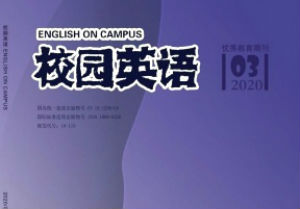bianji@xiaoyuanyingyu.com
作者:程颖 陈军
【Abstract】Corrective feedback(CF), as an important form in the interaction process, is the key to stimulate negotiated interaction to promote the second language development. The study adopts a pretest-treatment-posttest design with 30 senior high students as participants, whichpresents an in-depth analysis of CFin English speaking classrooms for senior high students in China. The key issue is whether CF differs quantitatively and qualitatively in different combinations in the aspects of their frequency, their outcomes and their effects.
【Key words】negotiated interaction; correct feedback; English speaking classrooms; English speaking competence
【作者簡介】程颖(1982.06-),女,汉族,华南师范大学在职硕士研究生,任教于广东省湛江市第二十中学,研究方向:高中英语教学;陈军(1977.10-),男,汉族,广东外语外贸大学英语本科毕业,中山大学硕士研究生,研究方向:教育管理。
1. Introduction
The Interaction Hypothesisstates that the development of language proficiencyis promoted by face-to-face interaction and communication. To answer the question how students can best be assisted viaclassroom interactions in becoming more target-like language, I sought to show how corrective feedback (CF)provided during negotiated interactionshapes interlanguagedevelopment.
2. Literature Review
There was a great body of study related to CF, butproblemsarose when adapted to the teaching and learning environment in China.So,, this study explores theiroccurringin student-student interaction in English speaking classroom, which is hoped to find a more effective and practical way of administering CF.
3. Research Design
3.1 Research Questions
In this study, I explore several questions related to CF:
(1) How frequent is CF in Groups?
(2)Dose CFdiffer qualitatively and quantitatively in different combination of interactions involving different proficiency levelsofstudents?
(3)Can CF promote students’speaking competence development?
3.2 Participants
The participants are30 students with different proficiency levels, low, middle and high English, who are senior high students. They form groups, combinations and dyads.
4. Results and Data Analysis
4.1 Data Summary of CF in Groups
Table 4.1 showed that five CF strategies were used by students, explicit correction, recast, clarification requests, elicitation and repetition. Among them, recast and clarification request were the two most frequently used (at rate 39.5% and 31.5% respectively) and metalinguistic feedback had not been used.
相关推荐
[校园英语杂志社] A study on intrinsic and extrinsic motivation of English maj
[校园英语杂志社] A study of Vladimir and Estragon in Samuel Beckett’s Waiting
[校园英语杂志社] The study of radical “金 gold” and “木wood”
[校园英语杂志社] How Mandarin affects the English Acquisition:A Case Study of
[校园英语杂志社] A study on a present training situation of intercultural com
[校园英语杂志社] A Study of Metaphors in Su Shi’s Ci From the Perspective of
[校园英语杂志社] An Analysis Study of how social school differs from cognitiv
[校园英语杂志社] A Study on the Cohesion of Course Content between College E
[校园英语杂志社] A Study of the Current Situation and Common Problems of Chin
[校园英语杂志社] The Study of Humorous Effects Achieved by ViolatingCooperat
[校园英语杂志社] The Study on How to Improve the Effectiveness of English Tea
[校园英语杂志社] In search of the effectiveness of MALL: a case study about s
[校园英语杂志社] Study on Forgetting Theory in English Vocabulary Learning
[校园英语杂志社] A Contrastive Study of the For3669m
[校园英语杂志社] Study on the Relationship between Beliefs and Strategy Use o




